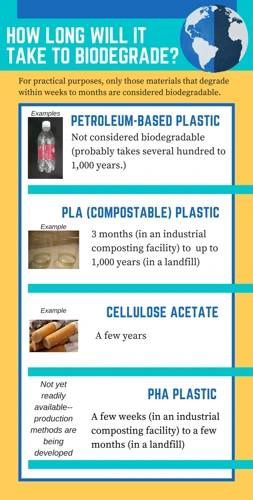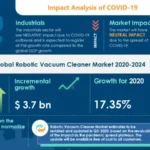Plastic has become an integral part of our daily lives, but its impact on the environment cannot be ignored. The world generates millions of tons of plastic waste, and with its non-biodegradable nature, it accumulates in landfills and oceans, causing immense harm to the ecosystem. In recent years, bio-based plastics have emerged as a possible alternative. The question arises, are bio-based plastics better for the environment than traditional plastics? In this article, we delve into the topic and explore the environmental benefits, challenges, and compare them with traditional plastics.
What are Bio-based Plastics?
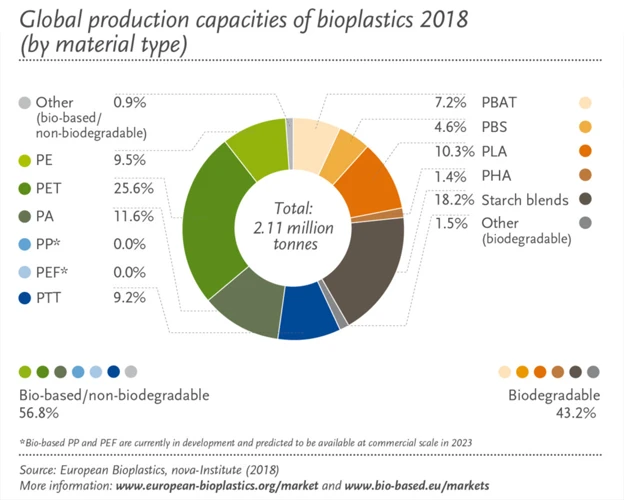
Have you ever wondered what bio-based plastics are and how they compare to traditional plastics? As the world moves towards a more eco-friendly and sustainable future, finding alternatives to traditional plastics has become increasingly important. Bio-based plastics, also known as bioplastics, offer a potential solution to the environmental issues caused by traditional plastics. In this section, we’ll delve deeper into what bio-based plastics are and explore the different types of bioplastics that are available on the market. So, let’s get started!
How are Bio-based Plastics Made?
Bio-based plastics are made from renewable sources, such as corn starch, vegetable fats, and oils. They can also be made from biodegradable materials, including cellulose, polylactic acid (PLA), and starch blends. Here are some steps in the process of making bio-based plastics:
- Feedstock production: The first step is to grow the crops that will be used as a raw material. This can involve planting and harvesting crops such as corn or sugarcane.
- Extraction: The next step is to extract the raw materials from the crops. For example, cornstarch may be extracted from corn kernels or cellulose may be extracted from wood pulp.
- Fermentation: Once extracted, the raw materials are processed through fermentation to create the monomers (building blocks of polymers) necessary for plastic production.
- Polymerization: The monomers are then chemically bonded together through a process called polymerization to create long chains of polymers, which make up the plastic.
- Additives: To improve the properties of the plastic, such as its flexibility or strength, additives like plasticizers are added to the polymer before it is formed into the final product.
- End product: The final stage is the creation of the end product itself, which can take many forms, such as bags, packaging, or containers.
While the process may seem complicated, the end result is a material that is eco-friendly and sustainable, making it an excellent alternative to traditional plastics. To learn more about eco-friendly materials and their benefits, follow the link. For those looking to make sustainable choices in their household cleaning, bio-vacuum bags made of natural and biodegradable materials are worth considering.
What are the Types of Bio-based Plastics?
When it comes to bio-based plastics, there are different types available depending on the source of the material used. Let’s take a closer look at some popular types of bio-based plastics.
| Type of Bio-based Plastic | Source | Properties |
|---|---|---|
| Polylactic Acid (PLA) | Corn starch, sugarcane, cassava | Biodegradable, renewable, compostable, transparent, heat resistant |
| Cellulose Acetate | Wood pulp, cotton fibers | Biodegradable, transparent, high gas permeability, water-resistant |
| Polyhydroxyalkanoates (PHA) | Microorganisms like bacteria, yeast | Biodegradable, renewable, compostable, strong and flexible, heat resistant |
| Polybutylene Succinate (PBS) | Corn starch, sugarcane, cassava | Biodegradable, renewable, compostable, lightweight, durable |
| Starch Blends | Corn, potato, tapioca starches | Biodegradable, renewable, low gas permeability, flexible |
Polylactic Acid (PLA) is made from renewable sources like corn starch, sugarcane, and cassava. It’s commonly used in packaging, disposable utensils, and 3D printing. The properties of PLA include transparency, heat resistance, and the ability to be composted.
Cellulose Acetate is produced from wood pulp and cotton fibers. It’s commonly used in food packaging, cigarette filters, and water filtration systems. It’s biodegradable and has high gas permeability, making it a good choice for certain applications.
Polyhydroxyalkanoates (PHA) is a family of biopolymers produced by microorganisms like bacteria and yeast. It’s commonly used in food packaging, medical implants, and agriculture. It’s biodegradable, renewable, and compostable, with the added advantage of being strong and flexible.
Polybutylene Succinate (PBS) is made from the same sources as PLA and is used in packaging, agricultural films, and textiles. It’s lightweight and durable, with the added advantage of being biodegradable, renewable, and compostable.
Starch Blends are made from different types of starch, including corn, potato, and tapioca. They’re commonly used in packaging, disposable tableware, and bags. They’re biodegradable, renewable, and flexible with low gas permeability.
These types of bio-based plastics offer a range of properties and applications, making them a viable alternative to traditional plastics. However, there are still challenges to widespread adoption, such as cost and production capacity. Nonetheless, the potential benefits are worth exploring and pursuing for a more sustainable future.
How are Bio-based Plastics Better for the Environment?
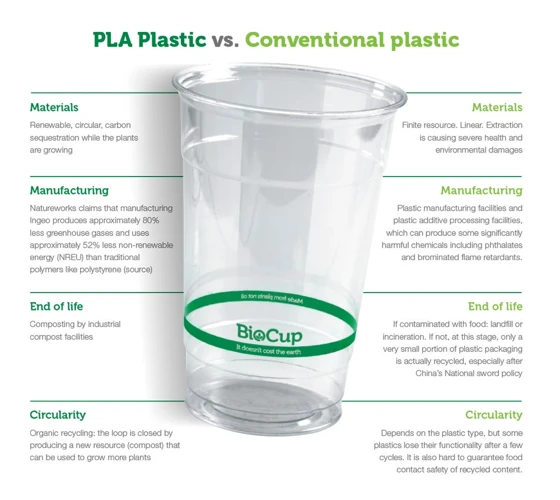
As concerns about the environmental impact of traditional plastics grow, many are turning to bio-based plastics as a more sustainable alternative. This section will explore how bio-based plastics offer several benefits to the environment, including reduced carbon footprint, less dependence on fossil fuels, biodegradability, and renewable resources. By contrast, traditional plastics have been linked to various sustainability concerns, such as land and water pollution, non-biodegradability, and a dependence on fossil fuels. Let’s dive deeper into why bio-based plastics may be a better choice for the environment. For those interested in eco-friendly cleaning practices, there are vacuum cleaners made from eco-friendly materials that can also help reduce their environmental impact.
Reduced Carbon Footprint
Reduced Carbon Footprint
One of the most significant advantages of bio-based plastics is that they have a reduced carbon footprint. Unlike traditional plastics, which rely heavily on fossil fuels in their production, bio-based plastics are made from renewable resources, such as plant-derived sugars, maize starch, and vegetable fats. These resources are much more sustainable, and their production involves significantly less greenhouse gas emissions.
In addition to the reduced carbon footprint of bio-based plastics, their end-of-life can also contribute to carbon sequestration. When bio-based plastics are broken down through composting, they release carbon dioxide, but this carbon was already extracted from the atmosphere during the plant’s growth, so it’s considered carbon neutral. In contrast, traditional plastics release carbon into the atmosphere during their production, use, and disposal.
By using bio-based plastics instead of traditional plastics, individuals and industries can significantly reduce their carbon footprint and contribute to mitigating the impact of climate change.
The reduced carbon footprint is just one of many advantages of bio-based plastics. They offer numerous environmental benefits, including reduced dependence on fossil fuels, biodegradability and renewable resources. However, there are also some challenges that must be addressed before widespread adoption of these materials.
Less Dependence on Fossil Fuels
Less Dependence on Fossil Fuels
One of the biggest advantages of bio-based plastics over traditional plastics is their reduced dependence on fossil fuels. While traditional plastics rely on non-renewable resources such as oil and gas, bio-based plastics rely on renewable resources such as corn, sugarcane, and other plant-based materials. By using renewable resources, we can reduce our overall dependence on fossil fuels, which can have a significant impact on our environment.
In fact, according to Top 5 Eco Materials for Vacuum Cleaners, bio-based plastics can be made using up to 80% less fossil fuels than traditional plastics. This reduced reliance on fossil fuels not only helps to reduce our carbon footprint, but it also helps to conserve our dwindling natural resources.
Additionally, by producing bio-based plastics, we can also help to reduce our carbon emissions. Fossil fuels are a major contributor to greenhouse gas emissions, which contribute to climate change. By using renewable resources to create bio-based plastics, we can help to reduce our carbon emissions and mitigate the impact of climate change.
The reduced dependence on fossil fuels is a major advantage of bio-based plastics over traditional plastics. By using renewable resources to create bio-based plastics, we can reduce our carbon footprint, conserve our natural resources, and help to mitigate the impact of climate change.
Biodegradability
One of the key advantages of bio-based plastics over traditional plastics is their biodegradability. Biodegradation is the process by which organic substances are broken down into their simpler components by biological agents, such as bacteria or fungi. This process typically occurs naturally over time, or can be accelerated through the use of certain techniques or additives.
When it comes to plastic waste, traditional plastics are notoriously difficult to biodegrade. They can persist in the environment for centuries, releasing harmful substances and contributing to pollution in our oceans, rivers, and landfills. In contrast, many bio-based plastics are designed to biodegrade more easily and are made from renewable, natural resources.
The table below summarizes some of the key differences between biodegradable bio-based plastics and traditional, petroleum-based plastics:
| Biodegradable Bio-based Plastics | Traditional Plastics | |
|---|---|---|
| Source Materials | Renewable resources such as corn starch, sugar cane, or potato starch | Petroleum and natural gas |
| Biodegradation | Biodegrades more readily in the presence of biological agents such as bacteria, fungi, or enzymes | Sometimes photodegrades into smaller pieces, but does not biodegrade in a meaningful way |
| Environmental impact | May be less harmful to the environment due to reduced litter, plastic pollution, and harm to marine life | Often results in plastic pollution and harm to marine and other wildlife |
| End-of-life options | Can be composted in industrial facilities, or broken down by biological agents into simpler, non-toxic compounds | Often ends up in landfills or incinerators, and persists in the environment for centuries |
It’s worth noting that not all bio-based plastics are biodegradable, and not all traditional plastics are non-biodegradable. However, as a general rule, bio-based plastics made from renewable resources tend to be more biodegradable and have a lower impact on the environment than traditional plastics made from fossil fuels.
While biodegradable bio-based plastics have many advantages over traditional plastics, it’s important to note that they are not a panacea. There are still challenges with the production, cost, and end-of-life options for these materials, which we’ll explore in more detail later in this article.
Anchor text: To learn more about eco-friendly choices for your home, check out our article on eco-friendly vacuum cleaners. Or, if you’re interested in learning about the difference between recycled and upcycled materials, visit our piece on recycling versus upcycling.
Renewable Resources
One of the key benefits of using bio-based plastics is that they are made from renewable resources. These resources, such as corn or sugarcane, can be grown and harvested on a continuous basis, unlike traditional petroleum-based plastics that rely on finite fossil fuel resources.
Using renewable resources for the production of bio-based plastics helps to reduce our dependence on non-renewable resources, which are becoming scarcer and more expensive to extract. It also promotes the sustainable use of natural resources, as they are used in a way that is environmentally responsible and does not threaten the ability of future generations to meet their own needs.
Table:
| Bio-based plastics | Traditional plastics |
| Bio-based | Petroleum-based |
| Renewable resources | Finite, non-renewable resources |
| Reduced dependence on fossil fuels | Dependent on fossil fuels |
| Promotes sustainable use of natural resources | Natural resources used in a non-sustainable way |
Using renewable resources for the production of bio-based plastics is an environmentally friendly solution that reduces our dependence on non-renewable resources, promotes sustainability, and helps to ensure a better future for our planet. While there are challenges associated with bio-based plastics, it is clear that they offer important advantages over traditional petroleum-based plastics.
What are the Challenges with Bio-based Plastics?
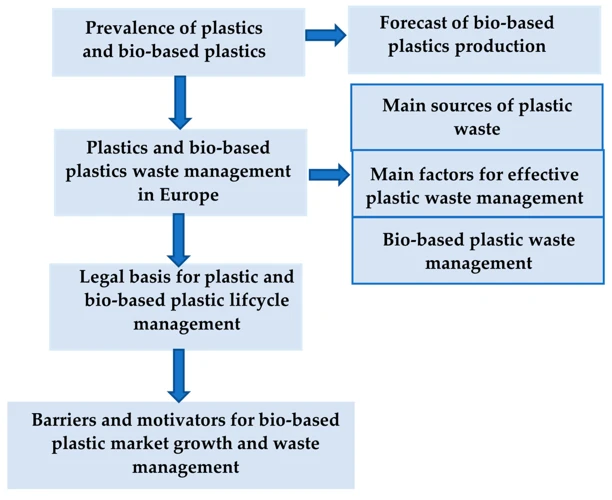
As with any new technology, there are still some challenges to overcome in the production and use of bio-based plastics. While they offer many potential benefits for the environment, it is important to also consider the practical limitations and drawbacks. From cost to end-of-life options, there are several factors to consider when comparing bio-based plastics to traditional plastics. Let’s take a closer look at some of the challenges that currently exist in the world of bio-based plastics.
Cost
One of the main challenges with bio-based plastics is their high cost.
- The production process for bio-based plastics is more complex and requires more resources than traditional plastics, resulting in higher costs.
- The demand for bio-based plastics is currently low compared to traditional plastics, resulting in a lack of economies of scale that could drive down costs.
- Also, the cost of the raw materials used in bio-based plastics, such as corn, sugarcane or other crops, can fluctuate based on market conditions and climate changes, affecting the overall production costs.
However, as more companies shift towards sustainable and eco-friendly products, the demand for bio-based plastics is increasing, which could lead to economies of scale and lower costs in the future. It is also important to note that the cost of traditional plastics does not reflect the environmental impact they have, which should be taken into consideration when comparing the two options. While it may seem expensive to choose bio-based plastics, in the long run, the environmental and societal benefits could outweigh the costs.
Availability and Production Capacity
Availability and Production Capacity
Despite the benefits of bio-based plastics, one of the major challenges facing them is the limited availability and production capacity compared to traditional plastics.
Bio-based plastics require specific feedstocks, such as corn, sugarcane, or vegetable oils, for their production. This often leads to competition with food production, and can drive up prices and limit availability for bio-based plastics.
The production of bio-based plastics also requires specialized equipment and facilities, which are not as readily available as those used to produce traditional plastics. This can result in higher production costs and slower production rates, making it more difficult for smaller companies to enter the market.
To overcome these challenges, there is a need for greater investment in research and development for the production of bio-based plastics, as well as for scaling up production facilities. Additionally, there is a need for greater awareness and support of bio-based plastics by consumers and governments to drive demand and encourage the growth of the industry.
While bio-based plastics may not yet be as widespread and readily available as traditional plastics, these challenges highlight the need for change and innovation towards more sustainable alternatives.
End-of-Life Options
After serving their purpose, both traditional plastics and bio-based plastics eventually reach the end of their usable life. At this point, the options for disposing of them are an important consideration.
Traditional Plastics: Many traditional plastics end up in landfills or as litter, where they will remain for hundreds of years without degrading. There are some initiatives to recycle traditional plastics, but unfortunately, only a small percentage of them actually get recycled. Incineration is another option, but this can release toxic chemicals into the air.
Bio-based Plastics: One of the benefits of bio-based plastics is that they can be biodegradable, meaning that they will break down naturally over time. However, it is important to note that not all bio-based plastics are biodegradable. Additionally, for biodegradable bio-based plastics to degrade properly they require specific conditions, such as exposure to moisture and bacteria, that may not always be present in typical landfills. As a result, composting is often the most effective end-of-life solution for bio-based plastics. When composted, bio-based plastics will decompose into water, carbon dioxide, and organic matter, leaving behind no toxic residue.
It is worth mentioning that while bio-based plastics offer more sustainable end-of-life options than traditional plastics, there is still room for improvement. Greater investment in recycling infrastructure and research into effective biodegradation methods could make bio-based plastics an even more attractive option in the future.
Let’s take a closer look at the end-of-life options for traditional plastics and bio-based plastics in the table below:
| End-of-Life Options | |
|---|---|
| Traditional Plastics |
|
| Bio-based Plastics |
|
While the end-of-life options for bio-based plastics are generally more sustainable than those for traditional plastics, there is still progress to be made. It is important for individuals and businesses to make responsible choices about their plastic consumption and disposal, and for industry and government to invest in research and infrastructure that will support a more sustainable future.
Potential for Land Competition
One of the major challenges with bio-based plastics is the potential for land competition. The production of bio-based plastics requires a large amount of agricultural land to grow the necessary feedstock, which could potentially compete with the production of food crops.
Here are some key points to consider:
- The demand for bio-based plastics is currently low compared to traditional plastics, but it is expected to rise in the coming years as more companies adopt sustainable practices in response to climate change concerns.
- This increase in demand may lead to an increase in the amount of land dedicated to growing feedstock for bio-based plastics production, which could potentially compete with land for food production.
- There is a risk that the demand for bio-based plastics could create situations where farmers prioritize growing crops for bio-based plastic production over food production, leading to food shortages.
- Additionally, the production of bio-based plastics could lead to an increase in monoculture, where a single crop is grown on a large scale, which can have negative environmental impacts such as soil degradation and loss of biodiversity.
- It is important to find a balance between the demand for bio-based plastics and the need for food production, and to ensure that the production of bio-based plastics does not come at the expense of food security or environmental degradation.
While bio-based plastics offer many environmental benefits, there are also challenges that need to be addressed. One of the most significant challenges is the potential for land competition, which could have negative impacts on food production and the environment. It is important for policymakers, businesses, and consumers to work together to find sustainable solutions that can balance the growing demand for bio-based plastics with the need for food security and environmental protection.
Traditional Plastics and Their Environmental Impact
Despite widespread use and convenience, traditional plastics have been shown to have an immense and lasting impact on our environment. The production and disposal of these plastics release harmful gases, pollute natural habitats, and take hundreds of years to break down. As we become more aware of the consequences of our actions on the planet, it is important to consider alternative options, such as bio-based plastics, that can reduce our ecological footprint. However, before examining bio-based plastics, it is essential to understand the issues associated with traditional plastics and their lasting effect on the environment.
Sustainability Concerns
When it comes to traditional plastics, there are several sustainability concerns that arise due to their production, use, and disposal. These concerns include:
- Resource depletion: Traditional plastics use non-renewable resources like fossil fuels, which are limited and finite. This makes their production unsustainable in the long term.
- Greenhouse gas emissions: The production of traditional plastics involves extensive use of energy, much of which is derived from fossil fuels. This results in significant greenhouse gas emissions, which contribute to climate change.
- Limited recycling: While traditional plastics can be recycled, the recycling rates are typically quite low. This means that a significant amount of plastic waste ends up in landfills, where it can take hundreds of years to decompose.
- Environmental pollution: The production and disposal of traditional plastics can lead to environmental pollution. This includes plastic waste in landfills, plastic pellets in waterways, and plastic debris in ecosystems.
It is clear that traditional plastics pose significant sustainability concerns, both for the environment and for future generations. While bio-based plastics are not a perfect solution, they offer a more sustainable alternative that can help mitigate these issues.
Land and Water Pollution
The extensive use of traditional plastics has had a devastating impact on the environment, particularly on the land and water systems. The production and disposal of plastics generate pollution and contribute to the degradation of ecosystems. Let’s take a closer look at some of the ways in which traditional plastics cause land and water pollution.
One of the most significant sources of land pollution from traditional plastics comes from landfill sites. Landfill sites are designated areas that are meant to contain waste, but as more waste is produced, these sites become overburdened and overwhelmed. Traditional plastics take hundreds of years to decompose, and during this period, they release harmful chemicals into the soil, water, and air. Landfills’ leachate, which is the liquid that seeps out of the waste, contains toxic chemicals that can contaminate the groundwater and surface water sources. This can lead to the death of marine animals and other aquatic creatures.
Another significant source of land and water pollution from traditional plastics is littering. Plastic trash that litters beaches, parks, and streets is not just unsightly; it poses a real threat to animals and the environment. Wildlife can become entangled in the plastic or ingest it, causing injury or death. Additionally, when plastic trash enters waterways, it can cause blockages, leading to flooding and damaging ecosystems.
According to a report by The Ocean Cleanup, nearly 80% of marine debris comes from the land. Plastic waste often finds its way into our rivers and oceans through littering or inadequate waste management systems. This plastic waste can create enormous “ocean garbage patches” that are hazardous for marine life and ecosystems, leading to the loss of habitats and the extinction of species.
Clearly, traditional plastics have a harmful impact on our land and water systems, and this damage will continue to escalate if we don’t take action to reduce its usage. By switching to bio-based plastics, we can significantly reduce our environmental footprint and protect our planet’s ecosystems.
Non-biodegradability and Longevity
One of the major concerns with traditional plastics is their non-biodegradability and longevity. These plastics take hundreds of years to break down in the environment, releasing harmful chemicals and posing a threat to wildlife and ecosystems.
The issue lies in the fact that traditional plastics are made from petrochemicals, which are not naturally occurring and cannot be broken down by microorganisms in the environment. As a result, they persist in our oceans, landfills and soil for many years.
This long lifespan of traditional plastics contributes to a build-up of plastic waste throughout the world. This waste has a negative impact on the environment and poses a threat to wildlife. Plastic waste in the oceans is particularly concerning, as it can harm marine animals through ingestion or entanglement, causing injury or death.
In contrast, many bio-based plastics are designed to be biodegradable or compostable. This means that they can be broken down by microorganisms in the environment, leading to the creation of natural substances that are not harmful to the environment.
While this is a major benefit of bio-based plastics, it is important to note that not all of them are biodegradable or compostable. Some have a similar lifespan to traditional plastics and can still contribute to plastic waste build-up. It is important to choose the right type of bio-based plastic depending on intended use and end-of-life options.
The non-biodegradability and longevity of traditional plastics is a major concern for sustainability and the environment. By choosing bio-based plastics that are biodegradable or compostable, we can help to reduce the impact of plastic waste on our ecosystems and wildlife.
Dependence on Fossil Fuels
Traditional plastics are heavily dependent on fossil fuels, which are non-renewable resources. The production of plastic requires large amounts of oil and natural gas, which are both finite resources. In fact, it is estimated that 8% of the world’s oil production is used for plastic manufacturing.
Here are some of the ways that this dependence on fossil fuels affects the environment:
- Climate change: The extraction and use of fossil fuels are major contributors to global warming and other environmental issues.
- Air pollution: The transportation and processing of fossil fuels release harmful pollutants into the air, contributing to respiratory illnesses and other health problems.
- Oil spills: The transportation of oil via tankers and pipelines is risky and sometimes results in devastating oil spills, which can have long-term effects on ecosystems.
- Habitat destruction: The extraction of fossil fuels often involves the destruction of natural habitats, such as forests and wetlands, which can have negative impacts on biodiversity.
The development and use of bio-based plastics provides an alternative to traditional plastics that can help reduce the dependence on fossil fuels. Because bio-based plastics are made from renewable resources, they offer a sustainable solution to traditional plastics that are derived from non-renewable resources.
Carbon Footprint
Carbon Footprint
The carbon footprint is a measure of the amount of carbon dioxide and other greenhouse gases that are emitted during the production and use of a product. Traditional plastics are made from petroleum, a non-renewable resource, and have a high carbon footprint. The process of extracting and refining petroleum releases high levels of greenhouse gases, including carbon dioxide and methane, into the environment. The production of traditional plastics requires significant amounts of energy, resulting in even higher levels of greenhouse gas emissions.
On the other hand, bio-based plastics have a lower carbon footprint than traditional plastics. This is because they are made from renewable resources, such as cornstarch, sugarcane, or cellulose derived from wood pulp, which require less energy to produce. The production of bio-based plastics also leads to a reduction in greenhouse gas emissions. Bio-based plastics emit only small amounts of carbon dioxide during production, and plants used to make these plastics absorb carbon dioxide from the atmosphere as they grow, further reducing the overall carbon footprint.
To compare the carbon footprint of bio-based plastics and traditional plastics, we can look at the following table:
| Material | Carbon Footprint |
|---|---|
| Traditional petroleum-based plastic | 8-12 kg CO2 emissions per kg of plastic |
| Bio-based plastic made from cornstarch | 1.8-2.7 kg CO2 emissions per kg of plastic |
| Bio-based plastic made from sugarcane | 0.8-1.3 kg CO2 emissions per kg of plastic |
This table clearly shows that bio-based plastics have a much lower carbon footprint than traditional petroleum-based plastics. Bio-based plastic made from sugarcane has the lowest carbon footprint, emitting less than a quarter of the carbon dioxide per kilogram of plastic compared to traditional petroleum-based plastic. This demonstrates the potential for bio-based plastics to reduce the carbon footprint of plastic production, and help combat climate change.
However, it is worth noting that the carbon footprint is just one aspect of environmental sustainability, and other factors such as biodegradability, end-of-life options, and cost must also be considered. Nonetheless, the lower carbon footprint of bio-based plastics makes them an attractive option for a more sustainable future.
Conclusion
As our investigation into the world of bio-based plastics versus traditional plastics comes to a close, it’s clear that the answer isn’t straightforward. Both have their advantages and disadvantages, and ultimately the choice comes down to individual circumstances and priorities. However, one thing is certain: the importance of implementing sustainable practices for the health of our planet cannot be ignored. Let’s dive deeper into what we’ve learned and explore the intricacies of this complex issue.
Which is the Better Choice?
After analyzing both bio-based and traditional plastics, it’s evident that each has its advantages and disadvantages. The choice ultimately depends on the specific use case and the available options.
However, it is crucial to weigh the environmental impact of each choice. To help with this, a comparison table of the advantages and disadvantages of bio-based and traditional plastics has been created below:
| Advantages | Disadvantages | |
|---|---|---|
| Bio-based Plastics | Reduced carbon footprint | Higher cost |
| Less dependence on fossil fuels | Availability and production capacity | |
| Biodegradability | End-of-life options | |
| Renewable resources | Potential for land competition | |
| Traditional Plastics | Inexpensive | Non-biodegradable and long-lasting |
| Widely Available | Dependence on fossil fuels | |
| Various end-of-life options | Sustainability concerns | |
| Land and water pollution |
As seen from the table above, bio-based plastics have a clear advantage in terms of their impact on the environment. They are made from renewable resources such as corn starch, sugarcane, and other plant materials, reducing the dependence on fossil fuels. They release fewer carbon emissions during production and have the potential to biodegrade, reducing the waste in landfills.
However, bio-based plastics suffer from some disadvantages such as high cost, limited availability and production capacity, and end-of-life options. Their production requires more resources and energy than traditional plastics, which leads to higher costs. Additionally, a lack of infrastructure may hinder their availability and production capacity, making them unsuitable for large-scale usage.
Traditional plastics, on the other hand, are inexpensive and widely available, making them a popular choice in industries. However, they pose a significant threat to the environment, as they are non-biodegradable and can take hundreds of years to break down. They also contribute to land and water pollution, further increasing their environmental impact.
It is clear that bio-based plastics are the better choice for the environment when compared to traditional plastics. However, their limitations must be considered when deciding on their usage. It’s important to remember the importance of the 3R’s- reduce, reuse, and recycle- to minimize the environmental impact of plastics.
The Importance of Reduce, Reuse, and Recycle
Taking care of the environment and reducing waste is a task that everyone should take responsibility for. While bio-based plastics offer a more sustainable alternative to traditional plastics, it is important to keep in mind that their production still has an impact on the environment. It is crucial to reduce, reuse, and recycle wherever possible to minimize waste and resource depletion.
Reducing the amount of waste generated is the first step towards environmental sustainability. To reduce waste, one can choose to purchase products with minimal packaging or those that are packaged with recycled materials. Additionally, people can reduce their use of single-use plastics, such as bags and straws, by switching to reusable alternatives such as cloth bags and metal straws. An easy way to reduce waste at home is to turn off lights and appliances when they are not in use.
Reusing items is another important aspect of environmental conservation. People can reuse items such as containers, bags, and clothing, instead of throwing them away after a single use. This not only reduces waste but also saves valuable resources, such as energy and water, that are needed to produce new products. For example, old containers can be used for storing leftovers, while clothes can be donated to charities or sold at second-hand stores.
Recycling is also a fundamental part of an eco-friendly lifestyle. Recycling helps to reduce the amount of waste that ends up in landfills and conserves resources by creating new products from recycled materials. Recycling bins can be found in many public areas, and many cities offer curbside recycling programs for residents. It is important to check with local recycling facilities to determine what materials can be recycled and how to prepare them for recycling.
While bio-based plastics offer a promising solution to the problems associated with traditional plastics, it is essential to adopt sustainable practices to reduce waste and conserve resources. By reducing, reusing, and recycling, we can all do our part in protecting the environment for future generations.
Frequently Asked Questions
Q: Are bio-based plastics completely biodegradable?
A: No, not all bio-based plastics are biodegradable. However, many are designed to biodegrade under certain conditions, such as exposure to sunlight or specific enzymes.
Q: Can traditional plastics be recycled?
A: Yes, some traditional plastics can be recycled. However, the recycling process is more difficult and less efficient than with bio-based plastics.
Q: How much cheaper are traditional plastics compared to bio-based plastics?
A: Traditional plastics are generally cheaper than bio-based plastics due to their abundance and ease of production.
Q: Are bio-based plastics more durable than traditional plastics?
A: It depends on the specific type of plastic. Some bio-based plastics can be just as durable as traditional plastics, while others may have lower levels of strength.
Q: How much energy is used in producing bio-based plastics?
A: The energy usage for producing bio-based plastics varies depending on the specific method and materials used, but is generally lower than for traditional plastics.
Q: Can bio-based plastics be used for food packaging?
A: Yes, many types of bio-based plastics are safe for use in food packaging and can offer similar levels of protection as traditional plastics.
Q: How do bio-based plastics reduce carbon footprint?
A: Bio-based plastics reduce carbon footprint by using renewable resources, which have a lower impact on the environment, and by producing less greenhouse gas emissions during production.
Q: What impact do traditional plastics have on the oceans?
A: Traditional plastics can have a significant impact on the oceans, contributing to pollution and harming marine life.
Q: Can bio-based plastics be composted at home?
A: It depends on the specific type of bio-based plastic and the composting method used. Some bio-based plastics can be composted at home, while others require industrial facilities.
Q: How do traditional plastics impact human health?
A: Traditional plastics can potentially impact human health through exposure to harmful chemicals, such as BPA, which can be released during production or use.
